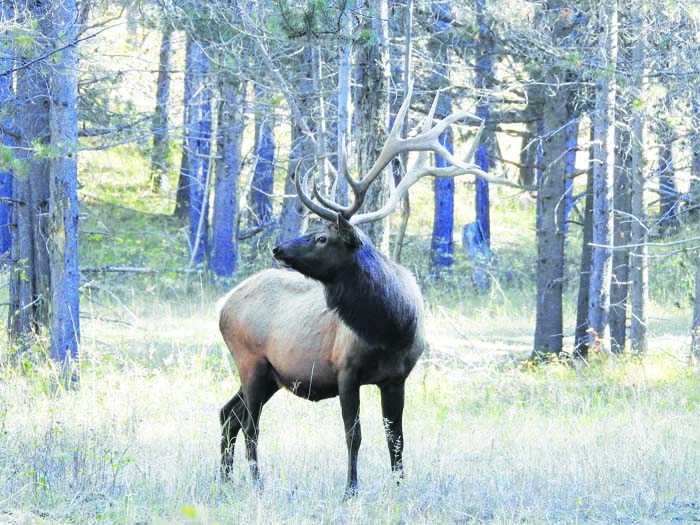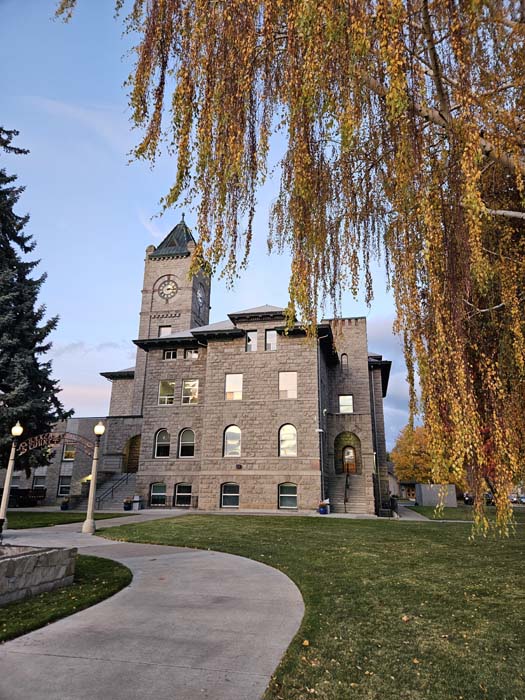Big change for archery hunters
Published 1:00 pm Wednesday, August 24, 2022

- Archery hunting for elk starts Aug. 27, 2022, in Northeastern Oregon. For the first time, hunting in most units is controlled, meaning hunters must have applied for and drawn a tag.
The archery hunting season will start as usual on the last Saturday in August, but this year is anything but ordinary in one respect.
Trending
For most of Northeastern Oregon, the archery season for elk is a controlled hunt for the first time.
In August 2021 the Oregon Fish and Wildlife Commission decided to change archery hunting for elk in 13 units and parts of three others from a general hunt — meaning there’s no limit on the number of tags sold — to a controlled hunt, with a limited number of tags that hunters have to apply for through the state’s lottery system.
The general hunt system had been in place in Eastern Oregon since 1979 for both elk and deer.
Trending
Since 1983 the archery season for both species has lasted about a month, from late August to late September. This year the season runs from Aug. 27 through Sept. 25.
But in 2020, officials from the Oregon Department of Fish and Wildlife (ODFW) announced a proposal to change archery hunts from general to controlled for deer and elk, starting in 2021.
Agency officials cited multiple reasons for the proposal, including a growing number of archery hunters over the past few decades, and a higher success rate among hunters due to better bows and arrows that make it possible for archers to make
lethal shots from longer
distances.
ODFW said the number of archers hunting elk in Eastern Oregon rose from about 12,300 in 1995 to about 18,500 in 2019.
Because the archery seasons remained general hunts, with no limits on how many tags were sold, ODFW’s lone tool to limit hunting and maintain deer and elk herds with sustainable numbers has been to cut tags for rifle hunts, which are controlled hunts with limited tags awarded through the lottery system.
In choosing which units to change from a general to a controlled archery season, ODFW officials considered the current elk populations in those units, as well as hunter density and hunter displacement, which are based on a public survey of hunters done in 2020.
In some units the ratio of bulls to cows is below the state’s goals, and in other units the bull elk harvest is near what biologists consider the unit’s capacity. In some units, archery hunters have been taking as many or more branch-antlered bulls than rifle hunters have, according to ODFW.
Although the agency initially planned to change both elk and deer hunts to controlled seasons in 2021, the commission ended up making the shift for deer hunting only starting with the 2021 season.
The switch to mostly controlled archery hunts for elk was delayed until 2022.
The change to controlled archery hunts, for deer and elk, has been controversial.
Bob Reedy, a Baker City bowhunter who also owns an archery shop, said he thinks the changes will result in confusion among hunters, and potentially discourage some longtime hunters from continuing their hobby.
Reedy argues that if ODFW wants to bolster bull elk numbers, then the agency should either temporarily ban hunters from killing bulls, or change the bag limit to branch-antlered bulls only.
The bag limit for many units in Northeastern Oregon for this year’s elk archery hunt is one bull elk. The traditional bag limit for archery hunting — any elk — remains in some units.
Reedy said he’s also concerned that the changes will contribute to animosity between archery and rifle hunters.
“We’re all hunters,” Reedy said.
More tags than applicants in many units
Although the shift from general to controlled hunts means some hunters who are accustomed to being able to hunt every year might not draw a tag through the lottery, ODFW has set tag allocations for most units at levels similar to the number of people who actually hunted during recent general seasons.
However, in some popular units the number of controlled hunt tags is well below the number of hunters in recent years.
For this year’s archery deer season — the bag limit is one buck with a visible antler — the number of tags in most units is well above the number of first-choice applications for 2021, the first year with controlled archery hunts.
Examples include:
• Imnaha unit — 308 tags in 2022, 77 first-choice applicants in 2021
• Sled Springs unit — 193 and 87
• Keating unit — 275 and 99
• Starkey unit — 770 and 107
• Catherine Creek unit — 495 and 101
The Baker Elks Lodge will not be collecting deer and elk hides this fall due to the high cost of fuel.
The lodge in past years has set out barrels where hunters can place hides. The Elks sell the hides and donate the proceeds to a variety of aid programs for veterans.
The U.S. Forest Service and Bureau of Land Management, the two federal agencies that manage most of the public land in Northeastern Oregon, have each issued press releases urging hunters and others to be responsible during the late summer and fall.
The Vale District of the BLM emphasized fire safety, as well as the potential hazards left by past blazes.
“Recreating responsibly ensures that all visitors to the forest have a good experience,” said Brian Anderson, Wallowa Mountains district ranger on the Wallowa-Whitman National Forest. “Picking up your trash, adhering to stay limits, and not storing or caching items on public lands are keystones of responsible recreation.”
Anderson said that when visitors build structures, cache items, leave trash or occupy campsites longer than 14 consecutive days, which is the limit, they can affect other users.
Forest Service employees and law enforcement are extracting and impounding caches and camps that are known to be in violation of the caching and stay limits. Illegally built structures will also be being removed.
Visitors are reminded that the following are prohibited:
• Caching personal property for a duration more than 72 hours within designated wilderness.
• Camping/leaving camp equipment for a duration that exceeds the 14-day stay limit. Building structures such as shelters, tables, toilets, etc.
• Cutting or damaging standing live trees.
• Leaving campsites in an unsanitary condition by leaving trash or human waste.
Fire danger is high or extreme across Northeastern Oregon, and on national forests, campfires are allowed only in designated campgrounds and in parts of the Eagle Cap Wilderness.
Campfires are prohibited on all public land managed by the BLM.
A list of restrictions on BLM, national forest and private lands protected by the Oregon Department of Forestry is available at http://bmidc.org/restrictions.shtml.









